Top 7 Free Mastering Limiter Plugins
7. Limiter - Kilohearts
6. Frontier - D16 Group Audio Software
5. Easy Limiter - Saschart
4. Limiter No. 6 - Vlad G Sound
3. W1 Limiter - George Yohng
2. LoudMax - Thomas Mundt
1. Limiter Z - LVC Audio
Whether you’re trying to maximize the loudness of your mix for demos, or you’re preparing your final mix for distribution - having a go-to limiter is a must-have for a lot of engineers.
Although DAWs offer some options for limiting, it never hurts to have a few more options to create different tonalities, or perhaps achieve a more transparent sound.
Although some of the best digital limiters cost a fair amount of money, that doesn’t mean you can’t find some great free options . With that in mind, we sought to create a list of the best free mastering limiters that we could find.
We’ll take a listen to each one of these plugins, as well as discuss their functionality and interface in depth. Additionally, we’ll heavily compress a 200Hz sine wave to see if the limiter causes any unwanted distortion.
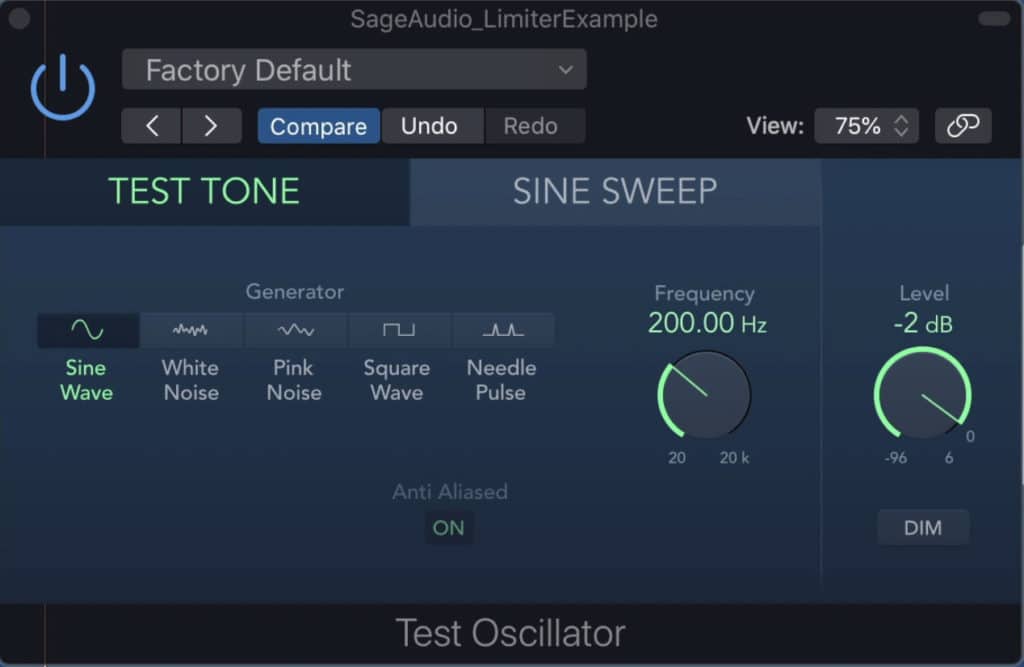
We'll be testing each plugin with a 200Hz sine wave and measuring the amount of distortion caused by the limiter.
Keep in mind that this list is in no particular order, since each one may be better suited for a particular genre or form of processing.
If you’re an artist or engineer, and you’re looking to have your mix mastered, send it to us here:
We’ll master it for you and send you a free mastered sample of it for you to review.
7. Limiter - Kilohearts
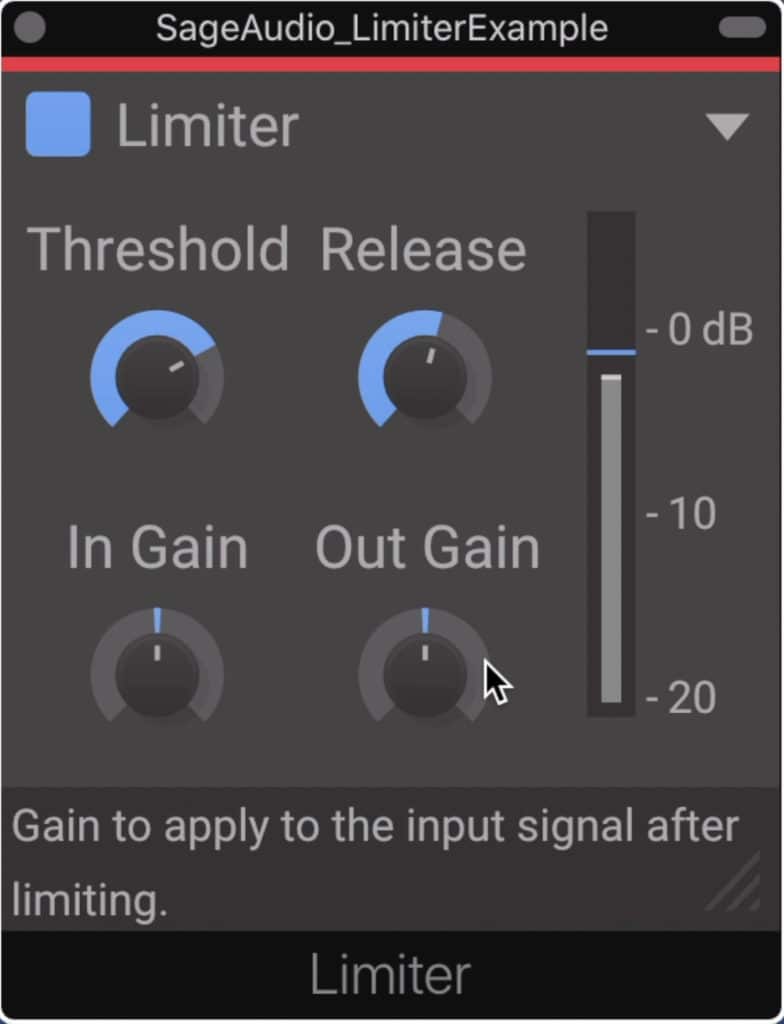
Limiter is a very simple plugin.
If you’re looking for a simple limiter with easily recognizable features, the Limiter by Kilohearts is a great option.
Let’s first take a look at whether or not the plugin causes any distortion to a signal by heavily compressing a 200Hz sine wave. If it does, we should be able to see harmonics generate in a frequency analyzer.
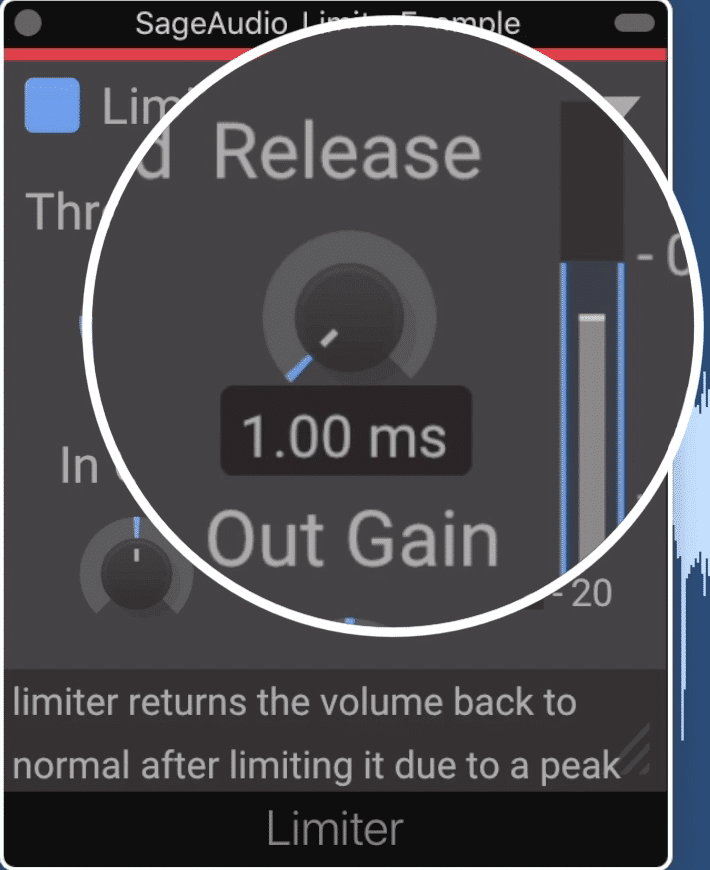
If you set the release time to 1ms, you'll have mild distortion of your signal.
We can see that by severely compressing the signal, we don’t generate any harmonics, even when the release time is set to just 1ms. In most compressors, this would cause distortion, but it seems that this plugin makes it difficult to distort the signal.
This means the Limiter by Kilohearts will most likely be a good option if you want to create a transparent master with little distortion. Although it should be noted that setting your release to 1ms will almost certainly cause some distortion.
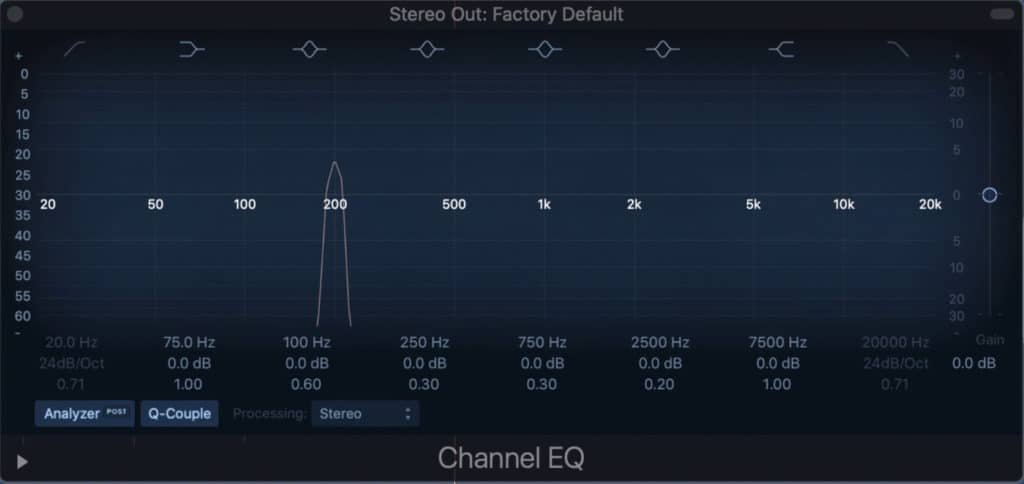
Notice that no harmonics are showing, meaning that little to no distortion is occurring when using this plugin.
Next, let’s look at the plugin’s functionality. As said before, this plugin is pretty simple in its design.
Up top, you’ll notice a blue square next to the title Limiter - although called a “snapin” by the plugin’s pop-up hints, this function is basically a bypass for the plugin.
The Threshold rotary determines when the limiting starts and ranges from -20dB to +6dB , meaning you can limit signals that have already clipped and pushed above the 0dB mark - although this won’t be needed too often, it’s cool that it’s an option nonetheless.
To the right, you have your release time which determines how long the limiter holds onto the signal for. A longer release with result in a smooth sound, whereas a shorter release results in a more transparent and dynamic mix or master.
In the bottom left is the In Gain function or the input’s gain. This ranges from -20dB to 20dB , is if you have a very quiet signal, or maybe a signal that’s too loud, you can adjust it with this dial.
In the bottom right you have the Out Gain or output’s gain, which also ranges -20dB to 20dB . On the right, you’ll notice a meter that uses a few different visuals to indicates how the compression is occurring.
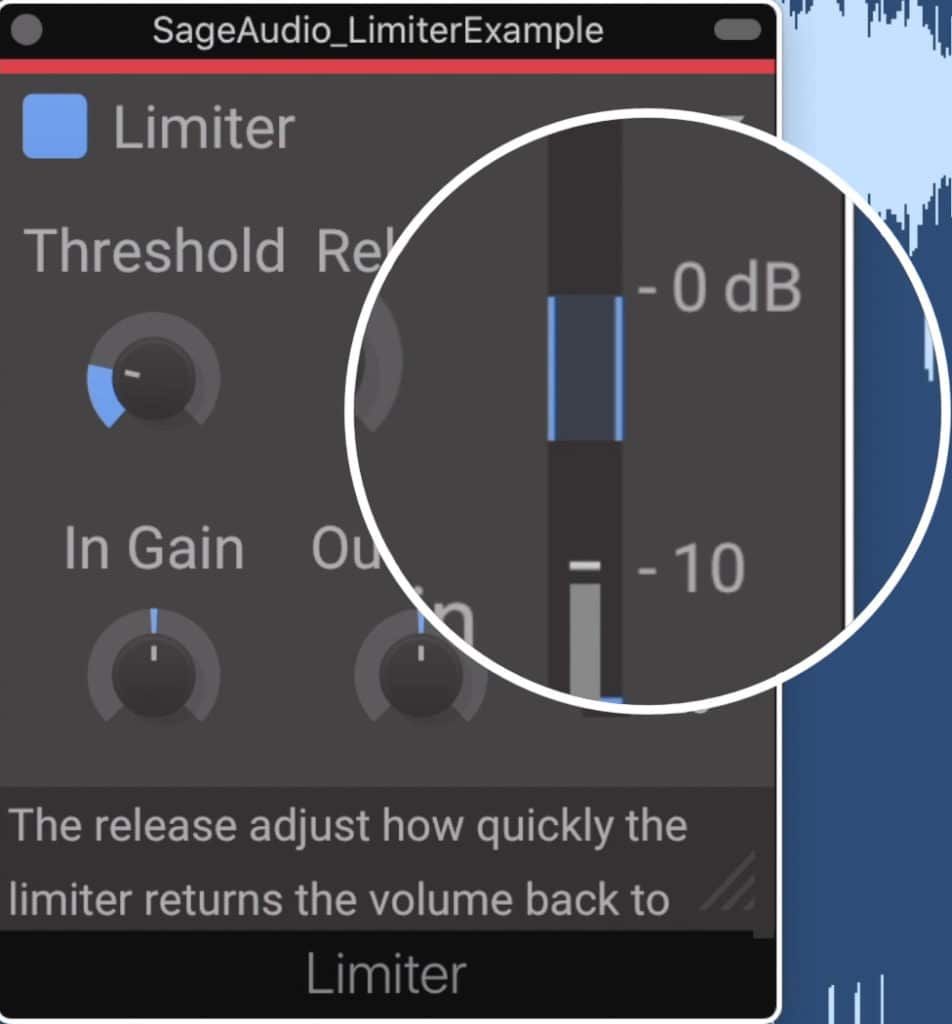
The release bar is unique in that it shows multiple metrics at once.
The threshold is shown as a solid blue line, the peak of the signal is shown as a white dash line, and the amount of attenuation is shown as a blue translucent bar that varies in speed with the release time.
You can resize the plugin’s interface by dragging the bottom right of the plugin. Lastly, up top, if you open the tab you can randomize your settings with the dice icon, or save a preset for future use.
6. Frontier - D16 Group Audio Software

Frontier is a highly regarded free limiter.
For a limiter that can add some tonality to your signal and a little bit of beneficial distortion, the Frontier is definitely worth your time.
When it comes to harmonic generation and distortion, the D16 only introduces these if you want them present. If you have the soft clip function enabled, you’ll notice a few subtle harmonics - but otherwise, the compression is relatively clean.
Let’s take a look at the plugin’s functionality. Starting from the left you have the D16’s signal detection setting, which can be altered from the Left channel, the Right channel, or the Mid channel.
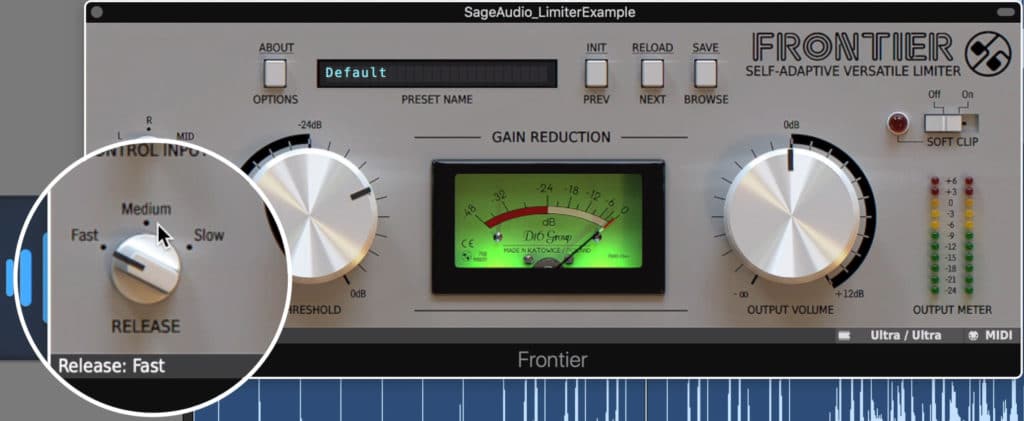
The release is program dependent, meaning it adapts to the incoming signal.
Underneath this rotary, you’ll find the release dial which can be switched between Fast, Medium, and Slow. What’s unique about this limiter is that the release times are program-dependent, meaning they change based on the incoming signal.
The Threshold ranges 48dB and is also unique in that it includes automatic makeup gain, so even if you’re not compressing the signal, lowering the threshold is going to cause the signal’s amplitude to increase.
This is something you may want to look out for since the plugin starts with the threshold at -6dB, meaning it’ll make your signal louder without any changes made.
In the middle of the plugin, you have your VU meter which will show you how much compression is occurring, while the Output rotary lets you increase the gain by up to 12dB, or decrease it until the signal is muted.
Above the output meter, you’ll notice a Soft Clip switch. As we covered before, this switch introduces mild harmonic distortion that increases the closer the signal gets to 0dB and continues to increase past 0dB.

The soft clip function introduces mild harmonic distortion.
At the bottom of the plugin, you can change the quality of the processing - although I couldn’t find a description for what exactly this function improves, my best guess is that it introduces oversampling to reduce the effect of aliasing.
The D16 also allows for midi learning, if that’s something you’d like to use.
Up top, you can save and filter through any presets that you’ve created.
If you like this list and want more free plugins, check out another one of our lists for some other great options.
5. Easy Limiter - Saschart
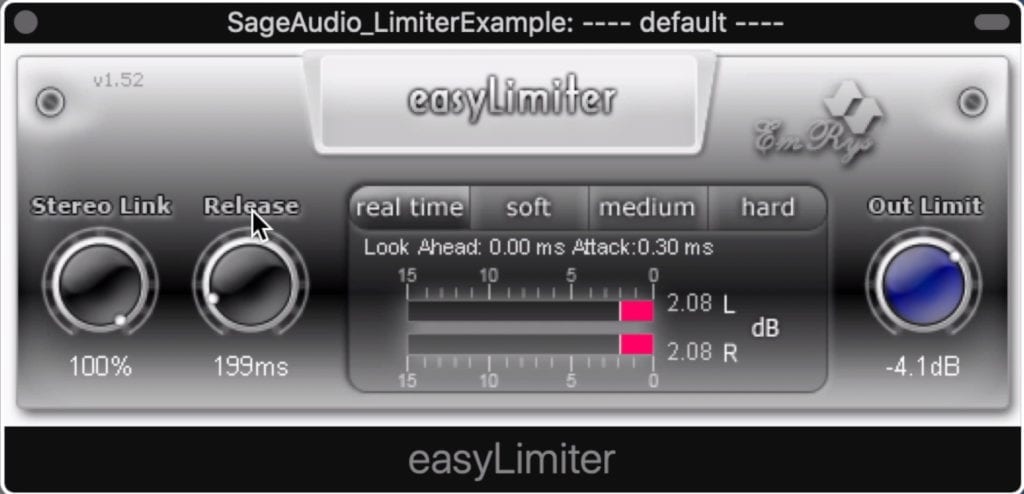
easyLimiter offers lookahead - something that isn't common with free limiters.
The Easy Limiter offers some advanced functionality that can help smooth out an aggressively compressed signal. By offering a lookahead function, the Easy Limiter gives engineers something that most other limiters don’t.
First, let’s see if the plugin causes any distortion to our sine wave.
We can see that setting a quick release time, under 10ms causes pretty significant distortion to our sine wave . This is either remedied or exacerbated by the real-time, soft, medium, or hard settings above meter so be careful when using this plugin, otherwise you might distort you mix or master.
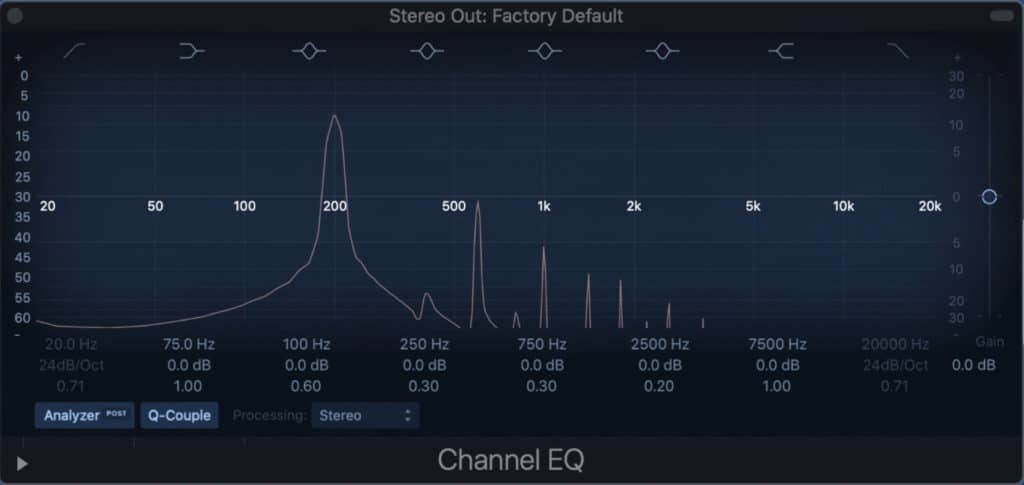
easyLimiter can cause pretty significant distortion.
Starting from the left of the plugin, we have the Stereo Link dial, which determines how the plugin detects the input. In the far left position, the Easy limiter measures the signal of the left channel, but when in the full right position, the left and right channels or the stereo channel is affected.
The release time can range from 1ms to 1500ms.

The stereo link controls which signal is detected (left channel or stereo) and the release ranges from 1ms to 1500ms.
In the middle of the plugin, we have the aforementioned settings - real-time, soft, medium, and hard.
These settings control both the lookahead, and the attack times , with real-time having no lookahead and a .30ms attack, soft having 5ms of lookahead and a 5ms attack, medium have 2ms of lookahead and a 2ms attack, and hard having .7ms of lookahead, and a 0.7ms attack.

In the middle of the plugin you can affect your attack and lookahead times.
This means that the real-time setting is going to be also the most prone to distortion. The soft setting's longer attack time means less will be compressed, and it’s longer lookahead time will mean the limiter will have more time to process the signal, resulting in less distortion but greater latency.
If you plan on using a short attack, I’d recommend using the soft setting.
The actual compression occurs when using the Out Limit function which is essentially a threshold. Strangely this plugin has no output gain dial , or make-up gain so you’ll need to use another plugin for that if you want to increase your gain after limiting.
4. Limiter No. 6 - Vlad G Sound

Limiter No.6 offers a analog emulation design.
For a limiter with a more classic tonality, and an analog emulation design Limiter No. 6 is a great and versatile option. Whether you’re using this plugin on an individual instrument, bus, or master output, you’ll find that its functionality can accommodate each setting.
Like the Frontier plugin, harmonic generation only happens if you’re looking to create it - in this case, you’d need to enable the clipper section to create some distortion.
But,if you make your release as fast a possible, and use Type A brick wall limiting, you’ll create some distortion , so keep that in mind if you use this plugin.
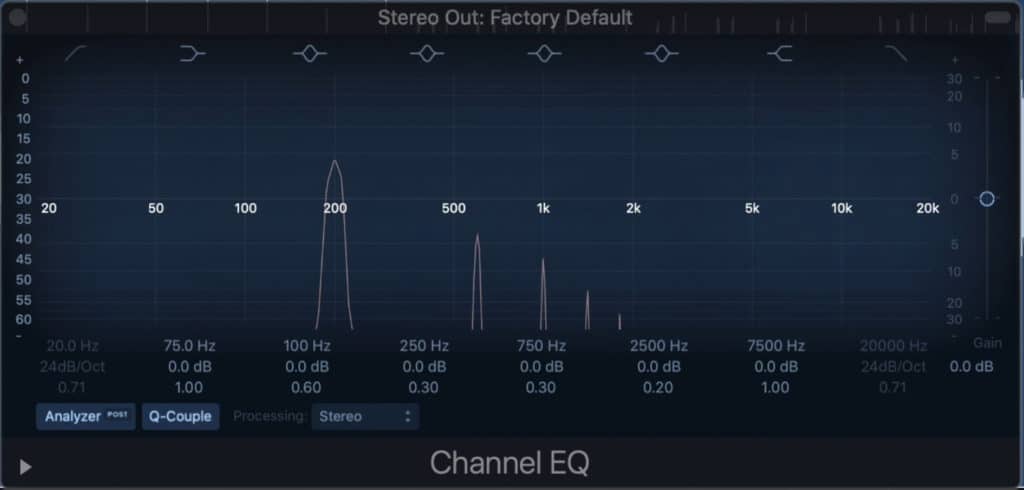
Some of the settings can cause distortion, so keep that in mind when using the plugin.
Because this plugin has so many functions, I’m going to give a brief description of each section.
On the far left is a compressor with input gain, some mild ratio settings, fast attack settings, and fast release settings. You can also switch this compressor from stereo to mid and side , as well as blend it in with the Dry mix rotary.
Up next is your first limiter , which can be switched between brick wall, soft, mid/side, and multi-band - each affects different frequencies of the signal uniquely.
The type of limiting can be altered as well, with 5 different types that help to shape the tonality of the compression by introducing different knee settings.
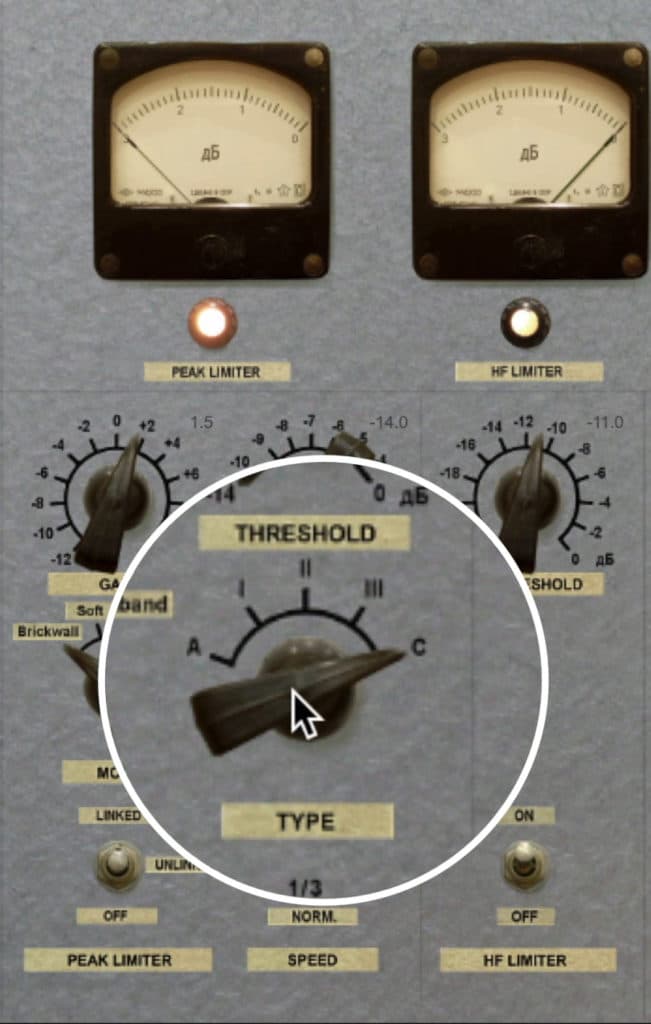
The threshold and compression type can be switched between 5 settings.
At the bottom of this section, you can enable or disable the limiter, and change the collective attack and release times.
To the right is a high-frequency limiter , which only affects the high-frequency range of the signal.
The clipper section can be used to enable clipping distortion in the form of harmonic generation. This will make the signal sound fuller but will become unpleasant for listeners at higher levels.
You can affect the clipper’s knee from hard to soft, and if it detects the signal as a stereo, mid/side, or multi-band signal.

By adjusting the clipper section's knee you can adjust how severely clipping occurs.
On the far right is the protection section which can keep your signal from digital clipping. You can reduce your ceiling to ensure the signal doesn’t go past a certain level, as well as change the detection to protect your signal from inter-sample peaking.
In the bottom right of the plugin , you can switch the language between English, Japanese, and Russian. In the top left, you can switch the input detection between stereo, the left channel, and dual mono.
You can also alter the plugin’s latency between minimal and fixed which uses the maximum latency possible, and change the routing having the compressor come before or after the limiter.
For some free compression plugins, take a look at the video below!
3. W1 Limiter - George Yohng
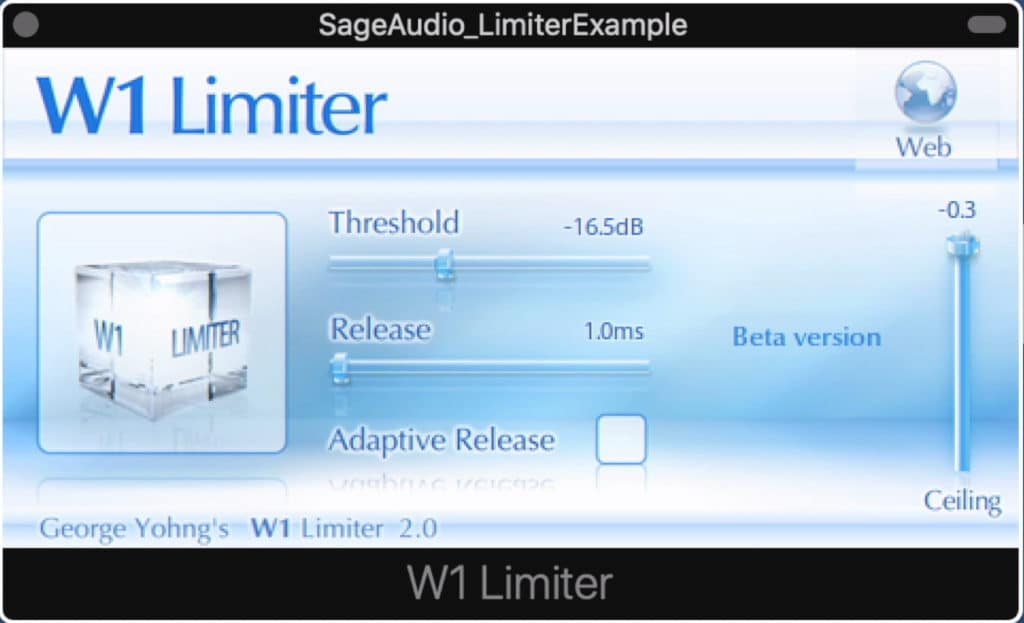
The W1 Limiter is a lot like the Waves L1 limiter.
Another simple limiter on this list, the W1 Limiter is a lot like the Wave’s L1 limiter, except with a variable or program-dependent release time.
When it comes to harmonics, this plugin was difficult to get to distort. Unless you have your release a 1ms, and you’re heavily compressing the signal, the W1 isn’t going to cause much distortion.
This makes it a great option for creating transparent limiting.

At the fastest release settings, it does cause some distortion.
The plugin's functionality is very simple. Your threshold ranges from 0dB to -30dB and introduces automatic makeup gain. The release time ranges from 1ms to 5000ms, making it possible to drastically smooth out your signal.

An adaptive release function is also available.
The adaptive release function enables program-dependent release, meaning the release time adapts to the level and nature of the incoming signal.
On the far right of the plugin, you can reduce the limiter’s ceiling to -30dB, meaning you can use this plugin to protect your signal from clipping distortion.
2. LoudMax - Thomas Mundt

LoudMax is just about an exact copy of the Waves L1 limiter.
While the W1 limiter is a lot like the Wave’s L1, LoudMax is just about as close to that plugin as you can get without actually using it.
This plugin may be the cleanest of all, as I couldn’t measure or detect any distortion. Even when drastically compressing the signal, it seems that the inter-sample peak ceiling doesn’t allow for distortion.
The threshold slider lowers the threshold, in turn introducing signal attenuation and simultaneous makeup gain. You can see how much the signal is being attenuated by the meter on the right.
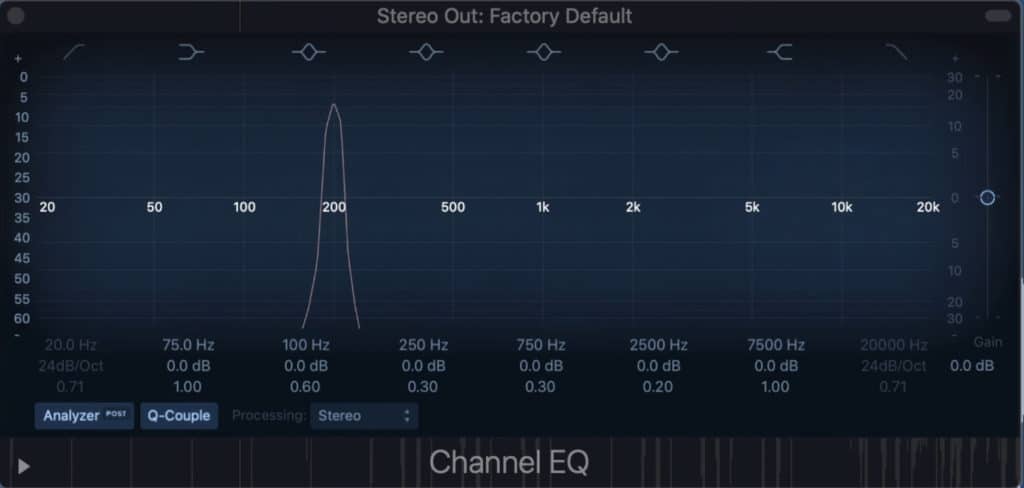
It doesn't cause any measurable distortion.
The Output sets the ceiling for your signal, down to -30dB.
The ISP button enables inter-sample peaking detection - this is the same a True Peak detection, meaning your signal won’t clip in between its samples.
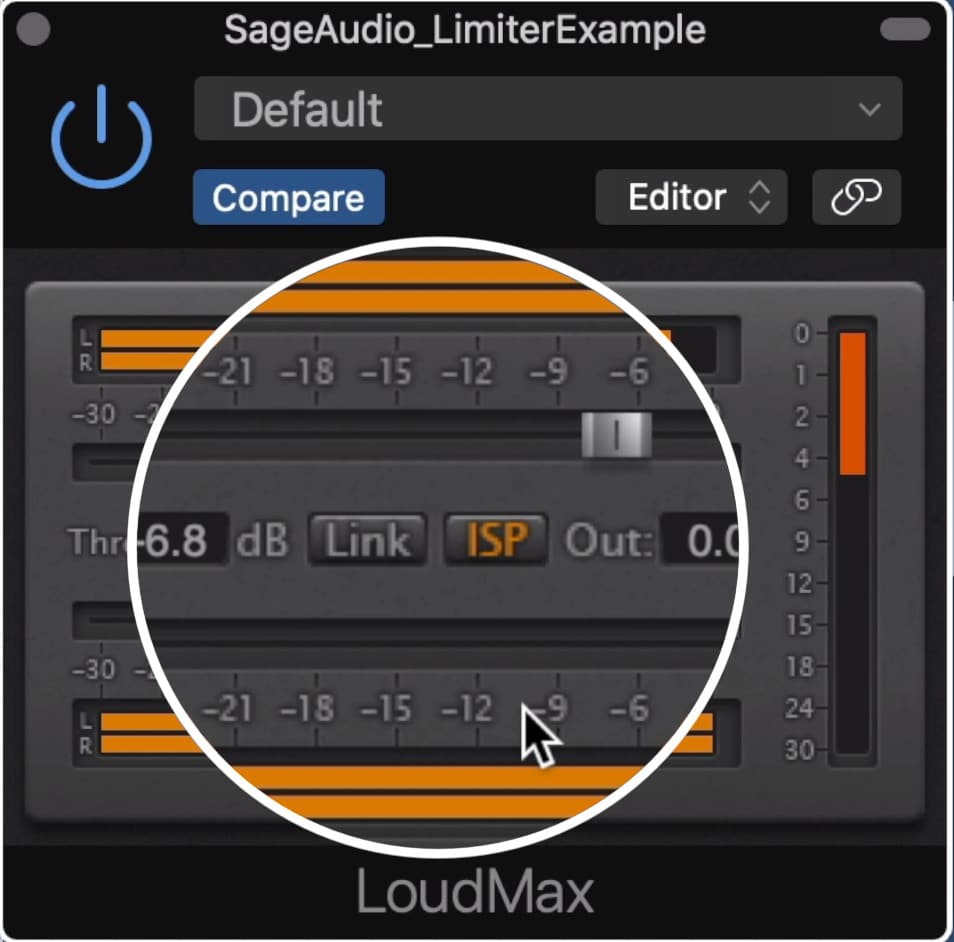
The Link and ISP buttons are located in the middle, and are used to link the input and output, and turn on inter-sample peaking detection respectively.
Lastly, the link button ties the Threshold and Output together. I’ve found that this is very useful for creating incredible clean sounding compression on individual instruments.
If you’re looking for a clean limiter, LoudMax is a fantastic option.
If you want to learn more about mastering, check out our video and blog post on the topic:
1. Limiter Z - LVC Audio
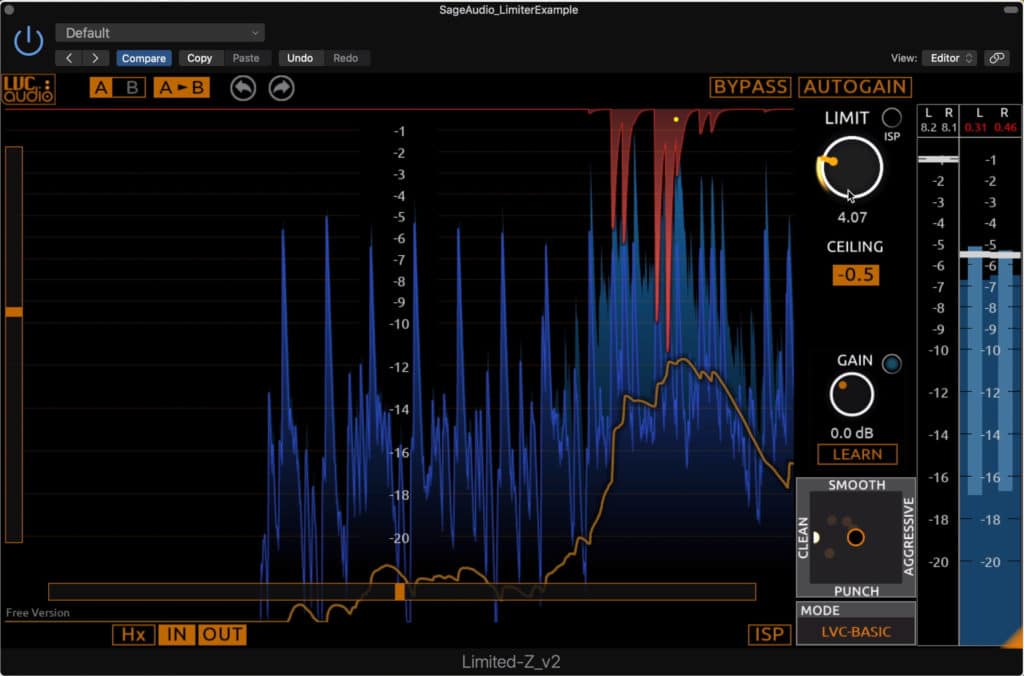
Limiter Z mimics the FF Pro L in design.
Last up on our list is the free version of the Limiter Z - which reminds me of the FabFilter Limiter in its design.
When it comes to distortion, this plugin causes a fair amount of it. Increasing the limiting rotary seems to cause more harmonics - this depends on the Mode function as well.
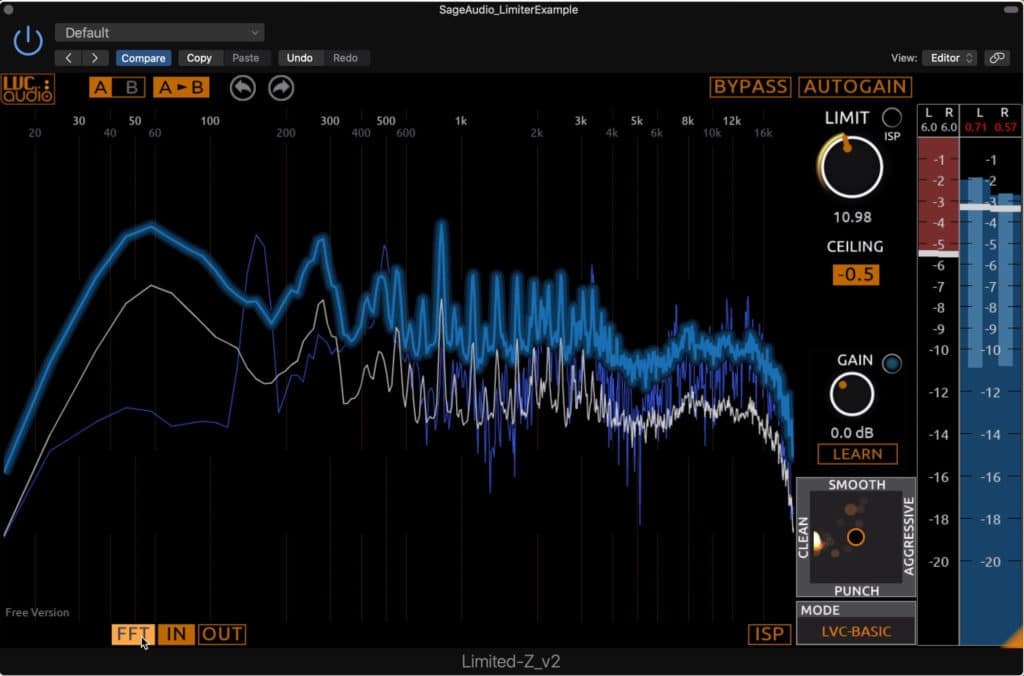
You can switch the window between gain reduction and frequency analysis.
Also, it might just be the version of the plugin that I have, but it seems that the plugin would cause more distortion, and then suddenly pop down to a lower level of distortion - so it's hard to determine how significant the harmonics it generates truly are.
What’s unique about this plugin is its display. At the bottom of the plugin, you can enable a display for the input, the output, and switches between a gain reduction display and a Fast-Fourier transform.
To the top right is your limit dial, which lowers the limiter’s threshold, attenuates the signal, and introduces makeup gain.
The Gain rotary is the output gain - a learn function for this gain is available meaning it can adjust to the incoming and outgoing signal.
Below this is your Mode section, which can be used to switch between different attenuation types. These will offer variable knees, and attack and release times.

You can alter the mode to change the tonality of the compression.
Use the Mode section to introduce different levels of distortion and create different timbres with your compression. You’ll notice that changing the Mode changes the icon above it - indicating if the signal will sound punchy, aggressive, smooth, or clean.
The ISP button enables inter-sample peaking detection, protecting your signal from additional clipping distortion.
Up top, you can bypass the plugin, introduce auto gain, and A B different settings. You can resize the plugin at the bottom right by dragging the window.
Conclusion
Hopefully one of these plugins will advance your mixes or masters or maybe be used on an individual instrument in one of your mixes.
Although somewhat similar, some of the entries on this list can be used to create different timbres and distortions, whereas some are better at creating a transparent sound.
Whether you’re looking for something simple and straightforward, or for a plugin that lets you hone in very specific and particular settings, there’s one here for you.
Is there a free limiter that you love that wasn’t listed here? Let us know in the comments section of the embedded video.
Also, if you end up using one of these limiters, or maybe have a specific technique with one, share that as well.
If you’re an artist or an engineer, and you have a mix that you’ve been wanting to hear mastered, send it to us here:
We’ll master it for you and send you a free sample for you to review.
Have you tried any of these limiters?




